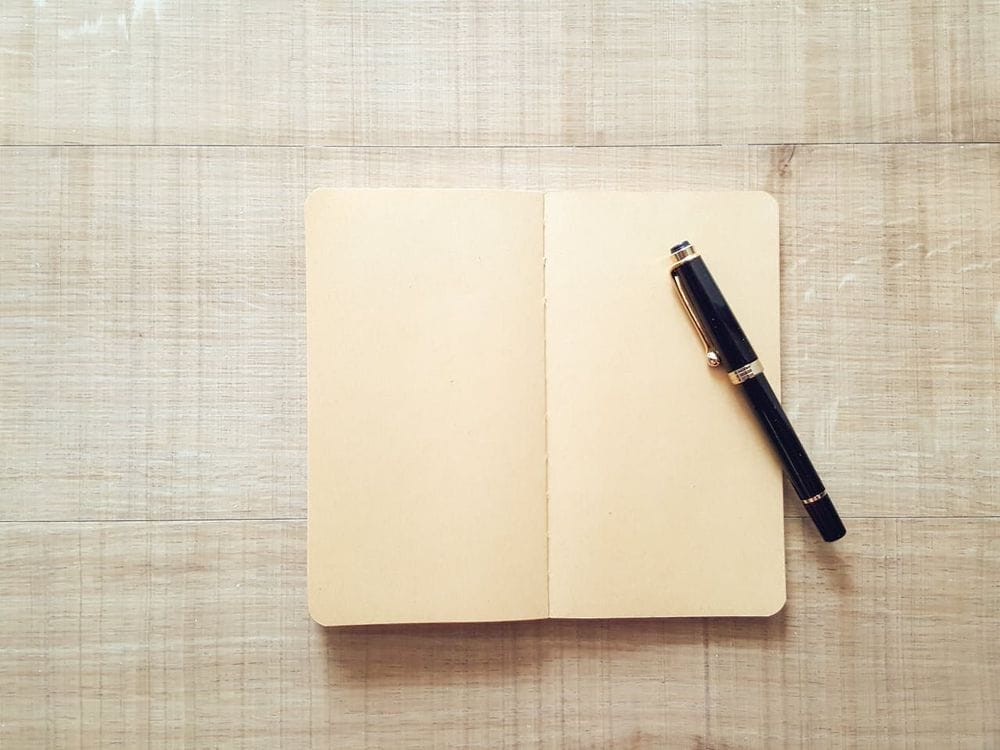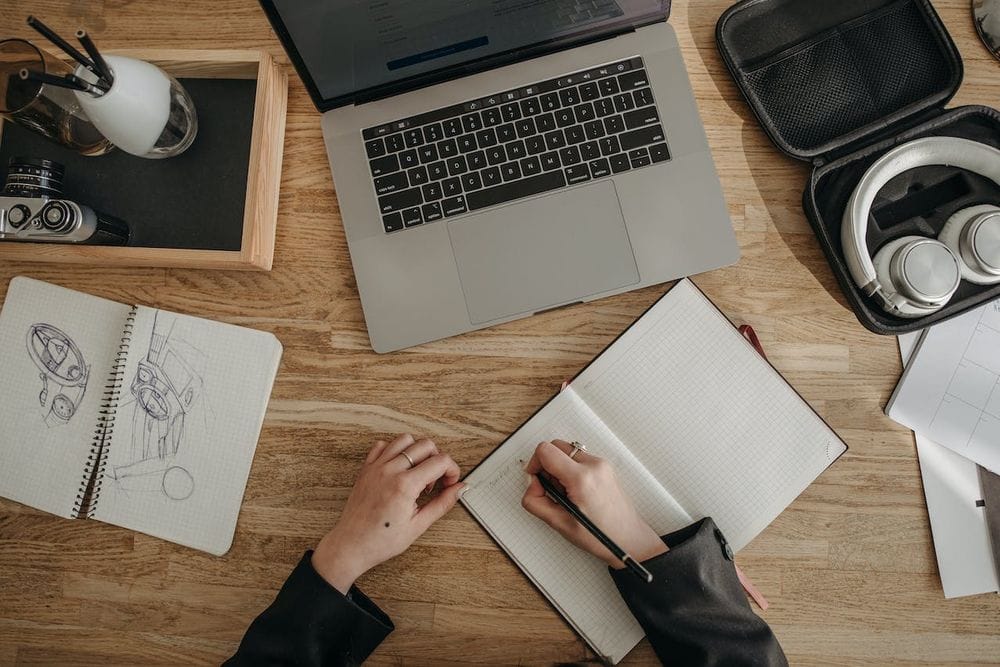Access thousands of exclusive scholarships
for free
In today's economy, there is no room to slack off when it comes to professional representation. The job market is very competitive, and everyone is hungry for the career of their dreams, which is why a well-written cover letter can make all the difference. And though you might think cover letters are a thing of the past, we can assure you the power of a good cover letter can be the defining factor that gets your foot in the door.
While the resume highlights your qualifications and experiences, you want to stand out amongst other applicants, which is where the cover letter comes in. The cover letter allows you to effectively communicate your motivations and suitability for the job. So, before you completely rule out cover letters from the application process, let our step-by-step guide walk you through the process of writing an impactful cover letter that will increase your chances of landing an interview for your dream job.
If you're in the market for a career change, check our blog for more information and learn how to create a profile today!
The Purpose of a Cover Letter
Now, we know what you're thinking: why do you need a cover letter when you have a resume? Simple. A cover letter serves as an introduction to your resume, highlighting your key qualifications and professional background and explaining why you are interested in the position. It gives the prospective employer a personal feel of who you are that helps them gauge your enthusiasm and fit for their organization.
So, before we get into the details of crafting a professional cover letter, it's important to understand its purpose. It is also important to keep in mind that it is not just a mere formality. The cover letter is a powerful tool that can make or break your chances of landing a job interview. And it can help captivate the hiring manager's attention, compelling them to take a closer look at your resume.
Get Matched to Thousands of Scholarships
Create your Bold.org profile to access thousands of exclusive scholarships, available only on Bold.org.
Create Free ProfileThe Role of a Cover Letter in Job Applications
Let's start by emphasizing the importance of standing out. Hiring managers receive numerous applications on a daily basis, which is why you want to create an effective cover letter that sets you aside from the rest. You want to make sure it demonstrates your communication skills, attention to detail, and commitment to the job. A well-crafted cover letter not only showcases your qualifications but also shows your unique personality and perspective.
A cover letter also allows you to convey your passion for the industry and the specific role you are applying for. It gives you the opportunity to explain why you are interested in working for the company and how your skills and experiences align with their values and goals. This personalized touch can make a significant difference in how your application is perceived by the potential employer. But you never want to start it off with "Dear Hiring Manager." Professionalism is key.
The Difference Between a Resume and a Cover Letter
While a resume provides a comprehensive overview of your skills, work experience, and education, a cover letter allows you to explain how your qualifications align with the specific requirements of the job. Think of the resume as the "what" and the cover letter as the "why" behind your application.
Please note: it's important to go beyond simply restating the information already mentioned in your resume. Your cover letter should focus on highlighting your most relevant achievements and experiences that directly relate to the job you are applying for. Use the cover letter as an opportunity to showcase your unique strengths and how you can contribute to the success of the company. If you have any questions or want to know what one looks like, we suggest looking into cover letter examples to get a clear idea of what you need or use a cover letter template to grab the attention of any hiring manager.
Also, a cover letter gives you the chance to address any potential gaps or inconsistencies in your resume. If there are aspects of your background that may raise questions, such as a career change or a gap in employment, this is the place to provide context and explain how these experiences have shaped you into a qualified candidate.

Preparing to Write Your Cover Letter
Before you start, take the time to research and understand not only the company but the role you're applying for.
Writing a cover letter is an essential step in the job application process. It gives you the opportunity to introduce yourself, showcase your qualifications, and demonstrate your enthusiasm for the position. However, before crafting your cover letter, below are a few important steps you should take to ensure its effectiveness. Let's take a look.
Researching the Company and Job Role
When looking for a new job, there is one thing that is especially important before sending your cover letter and resume: research. To effectively tailor your cover letter to any job, thoroughly research the company's values, mission, and culture first. This research will provide you with company insights that others may not know about, as well as give you a feel of what kind of candidate the company is looking for.
We suggest you start by exploring the company's website and social media platforms. Look for information about their products or services, their target audience, and any recent news or achievements. Pay attention to their mission statement and core values, as these will give you a sense of the company's culture and what they prioritize in their employees.
You also want to familiarize yourself with the job role requirements and skills necessary to succeed in the position. Carefully review the job description and make note of any specific qualifications or responsibilities mentioned. This will help you understand what the employer is looking for and help you write your cover letter accordingly.
Identifying Your Relevant Skills and Experiences
Once you have a clear understanding of the company's mission and job role, it's time to take a look at your resume and identify key skills and experiences that directly relate to the job requirements.
You want to start by examining your resume and making note of any technical skills, industry knowledge, or specific achievements that are relevant to the position you're applying for. Ask yourself, how do these skills and experiences align with the job description and the company's needs? And what do you need more of in order to match the job title?
For example, if the job requires strong communication skills and you have experience in public speaking or writing, be sure to highlight these in your cover letter. By highlighting relevant skills and experiences, you will show to the employer that you have the qualifications necessary to excel in the role. This will make your cover letter more attractive and increase your chances of an interview.

Structuring Your Cover Letter
Now that we've covered the essentials, it's time to write the perfect cover letter, but first, structure.
A well-structured cover letter is key when applying for a job. It serves as your introduction to the potential employer and gives you an opportunity to showcase your skills and experiences. To make your cover letter effective, include the following elements:
The Essential Elements of a Cover Letter
- Contact Information: First things first, at the top of the letter, include your name, address, phone number, and email. This information allows the employer to easily reach out to you for further communication.
- Date: It is important to include the date of writing. This helps the employer keep track of when the cover letter was submitted.
- Salutation: Address the hiring manager or recruiter by name if possible. This personal touch shows that you have taken the time to research and find out who will be reviewing your application.
- Opening Paragraph: Grab the reader's attention right from the start. Mention how you came across the job opening or any connections you have with the company. This shows your interest in the position.
- Main Body: The main body of your cover letter is where you can really shine. Explain why you are interested in the position and how your skills and experiences align with the company culture and mission. Use specific examples to illustrate your qualifications and demonstrate your suitability for the role.
- Closing Paragraph: Wrap up your cover letter by expressing your enthusiasm for the opportunity to interview, and always thank the reader for considering your application. For example, "Thank you for your time and consideration. I look forward to hearing from you about potential next steps."
- Complimentary Close: Use a professional closing, such as "Sincerely" or "Best." It adds mannerisms and shows you are polite and respectful.
- Signature: Last but not least, sign your name and include your typed name below. This adds a personal touch and makes your cover letter ending feel more authentic.

Formatting Your Cover Letter for Professionalism
Along with the proper content, the formatting of your cover letter is just as important when creating a professional appearance. Here are some tips to consider:
- Font and Font Size: Use a font and font size that are easy to read. Avoid using ornate or overly embellished fonts that may distract the reader. We suggest sticking to the more commonly used fonts like Times New Roman or Arial in 10-12 point size.
- Text Alignment: Align the text to the left. This makes your cover letter look clean and organized.
- Margins: Use standard margins to ensure that your cover letter fits well on the page and looks balanced.
By following our formatting rules, you can present your cover letter in a professional and visually appealing way, making a positive impression on your prospective employers.

Writing the Content of Your Cover Letter
Now that you have the structure in place, it's time to focus on the content of your cover letter. You don't want to write a generic cover letter, so you want to really showcase what you offer through your skills, experiences, and enthusiasm. And you can do this with a strong opening.
The opening of any cover letter is your chance to grab the reader's attention and make a memorable first impression. Briefly explain how you discovered the job opening or any personal connections you have with the company. This shows that you have done your research and have a genuine interest in the organization. Keep in mind that though there is no set limit as to how many pages a cover letter should be, we highly suggest keeping it to a one-page document.
Also, express your enthusiasm for the position. Most hiring managers want to know what interests them about the position, so don't hesitate to tell them why you would be a valuable asset to the company and the perfect fit for the role.
Crafting a Strong Opening Paragraph
Grabbing the reader's attention is key in a competitive job market. Knowing the hiring manager's name is also a plus. So, when you're thinking of your opening, think of something that makes you relatable both professionally and personally. One way to do this is by sharing a personal anecdote or story related to the position or company. For example, if a friend who works at the company told you about the job, you could mention how excited you were when they told you about the opportunity. This not only shows your enthusiasm but also highlights your network and connections within the industry.
Another element of a strong opening is addressing a challenge that the company is facing and how you can help the company get through it. By demonstrating your understanding of their needs and offering a solution, you immediately position yourself as a problem-solver and valuable asset. For instance, if the company is struggling with increasing sales, you can mention how you successfully increased sales by 20% at your previous job. This shows that you have the skills to overcome challenges.

Detailing Your Skills and Experiences
Now that you have your opening covered, the main body of your cover letter is your opportunity to provide specific examples of how your skills and experiences align with the job description. This part of your cover letter is your chance to showcase your accomplishments and prove that you have what it takes to excel on your team.
You also want to make sure that when detailing your skills and experiences, you're using supporting data to back up your achievements. This adds credibility to your resume and provides concrete evidence of your capabilities. For example, instead of stating you've managed a team, mention how you successfully managed a team of 10 employees and completed a project within budget and deadline timeframe. This not only highlights your leadership skills but also demonstrates your ability to deliver results.
Concluding Your Cover Letter Effectively
We've covered the opening and middle parts of your cover letter. Now, let's focus on the end.
In the closing paragraph of your cover letter, it's important to reiterate your interest in the position and express your enthusiasm for the job ad and the opportunity to interview. This is your final chance to leave a lasting impression on the reader.
While professionalism is key, use your concluding paragraph to thank the reader for considering your application and acknowledge their time and effort in reviewing your materials. This shows your appreciation and professionalism. To keep yourself one step ahead, invite the reader to contact you for further discussion or to schedule an interview. By extending this invitation, you demonstrate your eagerness to move forward in the hiring process and continue the conversation.

Reviewing and Editing Your Cover Letter
Now that you've concluded the writing portion on how to write a cover letter, it's time to edit.
Editing is probably the most important part of the cover letter writing process and most undervalued. Thoroughly reviewing and editing your cover letter is crucial for clarity, conciseness, and grammar errors. However, the process of reviewing and editing goes beyond simply checking for mistakes. Editing involves refining your work to ensure that it effectively communicates your qualifications and highlights your suitability for the position you are applying for.
So, before sending your cover letter, you want to proofread for grammar and spelling errors. While these may seem like minor details, they can easily be overlooked and can leave a poor impression on potential employers. To avoid grammatical and continuity errors, we recommended using online grammar tools or asking your peers to review your cover letter for errors. Their fresh perspective can help catch any mistakes that you may have missed.
Proofreading for Grammar and Spelling Errors
When proofreading your cover letter, pay close attention to more than just the obvious grammar and spelling mistakes. This is KEY. Take your time in reading each sentence carefully, ensuring that it flows smoothly and makes sense. Look out for any awkward phrasing or vague statements that may confuse the reader. Even though proofreading seems tedious, it can help you spot weak areas of your text, refine your writing, and make it more impactful.
You should also focus on clarity and conciseness. Avoid lengthy paragraphs and run-on sentences that may overwhelm the reader. Strive to be clear and concise in your writing, getting straight to the point. This will not only make your cover letter easier to read but also help the reader quickly grasp your qualifications and understand why you are a strong candidate for the position.

Ensuring Clarity and Conciseness
One effective way to enhance clarity and conciseness in your cover letter is to use bullet points or subheadings. These formatting techniques can help break up your text and make it easier to read. By organizing your content into smaller, digestible sections, you can guide the reader through your cover letter and highlight key points. Also, bullet points can draw attention to specific achievements or skills, making them stand out to the reader.
Most importantly, when reviewing/editing your cover letter, focus on the overall structure and flow of your letter. Ensure that your ideas are organized and that there is a smooth transition between paragraphs. This will keep the reader engaged and interested in your application.
Sending Your Cover Letter
Before sending your cover letter, consider the best method of submission. Be sure to follow the application instructions provided by the employer and submit your materials accordingly. That is, if submitting electronically, save your cover letter as a PDF to preserve formatting. If mailing your cover letter, for example, a physical copy, use high-quality paper and an appropriate envelope.
As long as you follow the instructions for that specific job, you will be good as gold.
Following Up After Submission
After submitting your cover letter, following up with the employer to reiterate your interest in the position is extremely important. This shows your enthusiasm and proactive attitude towards the opportunity. It can also put you ahead of the rest of the job candidates by showing your diligence.
Though we know writing a cover letter may seem like a daunting task, let this step-by-step guide be a motivating factor in your job search. Our goal is to help you create a compelling cover letter that will capture the attention of potential employers. We want you to show them you are as committed to the company's success as they are, and through a cover letter tailored to the job posting requirements and employer's needs, diligent research, thoughtful writing, and careful editing, yours will become a powerful tool in your job search toolkit.

Frequently Asked Questions on How to Write a Cover Letter
What is the right way to write a cover letter?
While this is no "right way" to write a cover letter, we do think having a guide helps. It can be difficult to know what a hiring manager is looking for, but writing a cover letter allows you to fill those holes by showcasing the qualifications and experiences that make you the best candidate for the job. By following our step-by-step guide, you can ensure your own success and potentially land the interview of a lifetime.
What is most important when writing a cover letter?
There are many important things when it comes to writing the perfect cover letter, but we like to think proofreading is key, key, key. You can write the best cover letter, check off every box in the job description, know every hiring manager's name, and be well-versed in the company website, but if your cover letter has grammatical errors or continuity issues, it takes away from your own validity and could potentially steer potential employers away from your application. So, while every step of the cover letter process is important, proofreading is a major key.
How many pages should a cover letter be?
As stated before, there is no limit on how many pages a cover letter should be, but we highly recommend keeping it to a one-page document. If you want to ensure all of your professional attributes are covered, and you exceed the one-page limit, that's 100% okay and up to you, but keep in mind that your cover letter should be direct and to the point. You don't want to go overboard and lose the hiring manager's focus by exceeding the limit.
Visit our blog to learn more information on how to spruce up your cover letter, and browse through our scholarship catalog today.


